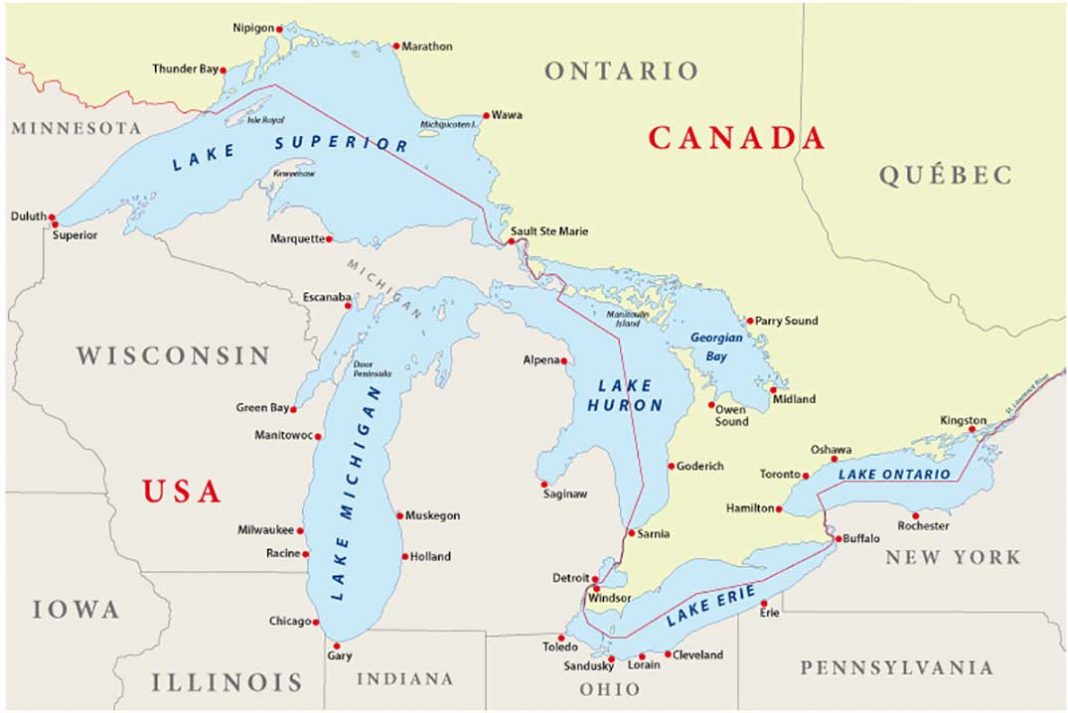GEORGIAN BAY—A group of four organizations representing Georgian Bay and the Great Lakes basin have written the Great Lakes and St. Lawrence governors and premiers to advise that “the Ontario government is currently in breach of the 2005 Great Lakes St. Lawrence River Sustainable Water Resources Agreement” and have submitted concerns that with Bill 23, the Ontario government intends to exacerbate this breach.
The Georgian Bay Association (GBA), the Federation of Tiny Township Shoreline Associations (FoTTSA), Georgian Bay Great Lakes Foundation (GBGLF) and Restore our Waters International (ROWI) collaborated on the December 9 letter.
The organizations state that when the agreement was signed in 2005, Ontario already had an intra-basin transfer in place and had built the ‘Big Pipe’ to take water from Lake Ontario to the Lake Simcoe Watershed, and sewage and stormwater pipes returning some of the intra-basin transfer to the York Durham Sewage and Stormwater Treatment Plant. The letter states that with the pre-existing transfer, Ontario was granted an exception, at 20 million litres per day (MLD), under the agreement and was to undertake to reduce the flow below the 19 MLD flow rate at that time.
Instead, the current flow rate is 25 MLD and Bill 23 contains provisions to further expand the intra-basin transfer to well beyond 25 MLD. “We are expecting a significant increase in the flow rate due to planned increases in building housing supply,” the letter states.
“Unfortunately, before Ontario signed on to the agreement that prohibits inter-basin transfer, which is the movement of water from one Great Lake to another, York Region put in place what they’ve called the ‘big pipe’ and set up a plan that’s been in motion now for years: moving water outside of the Lake Simcoe watershed down to Lake Ontario through that same treatment plant,” explained Mary Muter, chair of GBGLF. “Now Premier Ford, with his announcement, wants to double or triple that.”
Ms. Muter was a member of the Annex Advisory Panel during the negotiations of the 2005 agreement and said York Region was called to provide information to the panel as to what they were currently doing, because the governors of the eight Great Lakes states were concerned that Ontario was already moving water from one basin to another.
Under the terms of the agreement, Ontario is to adopt a “feasible, cost effective and environmentally sound water supply alternative within the Great Lakes watershed to which the water will be transferred” if one exists. The concerned organizations say that York Region does have an alternative in the proposed Upper York Sewage Treatment plant project and has, in fact, already spent $100 million developing the project within the Lake Simcoe watershed.
The Lake Simcoe facility was cancelled by Premier Doug Ford in favour of expanding the York Durham plant, which will significantly increase the intra-basin transfer described above. Ms. Muter explained that the Lake Simcoe watershed is connected to the Georgian Bay watershed. Lake Simcoe and Lake Couchiching drain into Georgian Bay at Port Severn.
“Georgian Bay is huge compared to the size of Lake Simcoe,” Ms. Muter said. “It’s a relatively shallow lake, so if you suck out all of the groundwater and collect all of the stormwater so it doesn’t go into Lake Simcoe, just what do you think is going to happen to the water levels on Lake Simcoe? The water that comes out of Port Severn will probably be greatly diminished and that will exacerbate low water level conditions on Georgian Bay.”
She doesn’t know if the people on Lake Simcoe understand this. “There are some people there who say they’re happy sending their sewage down to Lake Ontario,” she said. “I don’t think they understand that means drawing down the groundwater and sending all the stormwater too down to Lake Ontario.”
The Agreement also requires that Ontario provide notice to the other parties and conduct a “Regional Review” in advance of any proposal that would create or increase an intra-basin transfer. “They have not done this,” stated the letter. “Increasing the flow rate since 2005 is a breach of the Agreement and making the current decision to further increase it as outlined in Bill 23 without seeking prior approval from the Governing Body is also a breach of the Agreement.”
The Great Lakes Saint Lawrence River Basin Sustainable Water Resources Agreement was signed in 2005 by the governors of Illinois, Indiana, Michigan, Minnesota, New York, Ohio, Pennsylvania and Wisconsin, and the premiers of Ontario and Quebec. A companion Water Resources Compact was enacted into law in each of the eight states in 2008. The agreement was enacted by the Ontario provincial parliament in 2007, with Ontario’s implementing regulations being adopted on January 1, 2015. The agreement began coming into force as of March 8, 2015.
The compact and the agreement were founded on the ‘principles of precaution, ecosystem protection, and recognition of cumulative impacts and climate change uncertainties.’ They were implemented to ‘provide strong protections for Great Lakes-St. Lawrence River Basin waters.’
Section 4.8 of the agreement calls for a prohibition of new or increased diversions with some exceptions.
The letter concluded with a request that the governors urgently review the above breaches of the 2005 agreement and “take action to compel Ontario to comply with the Agreement.”





